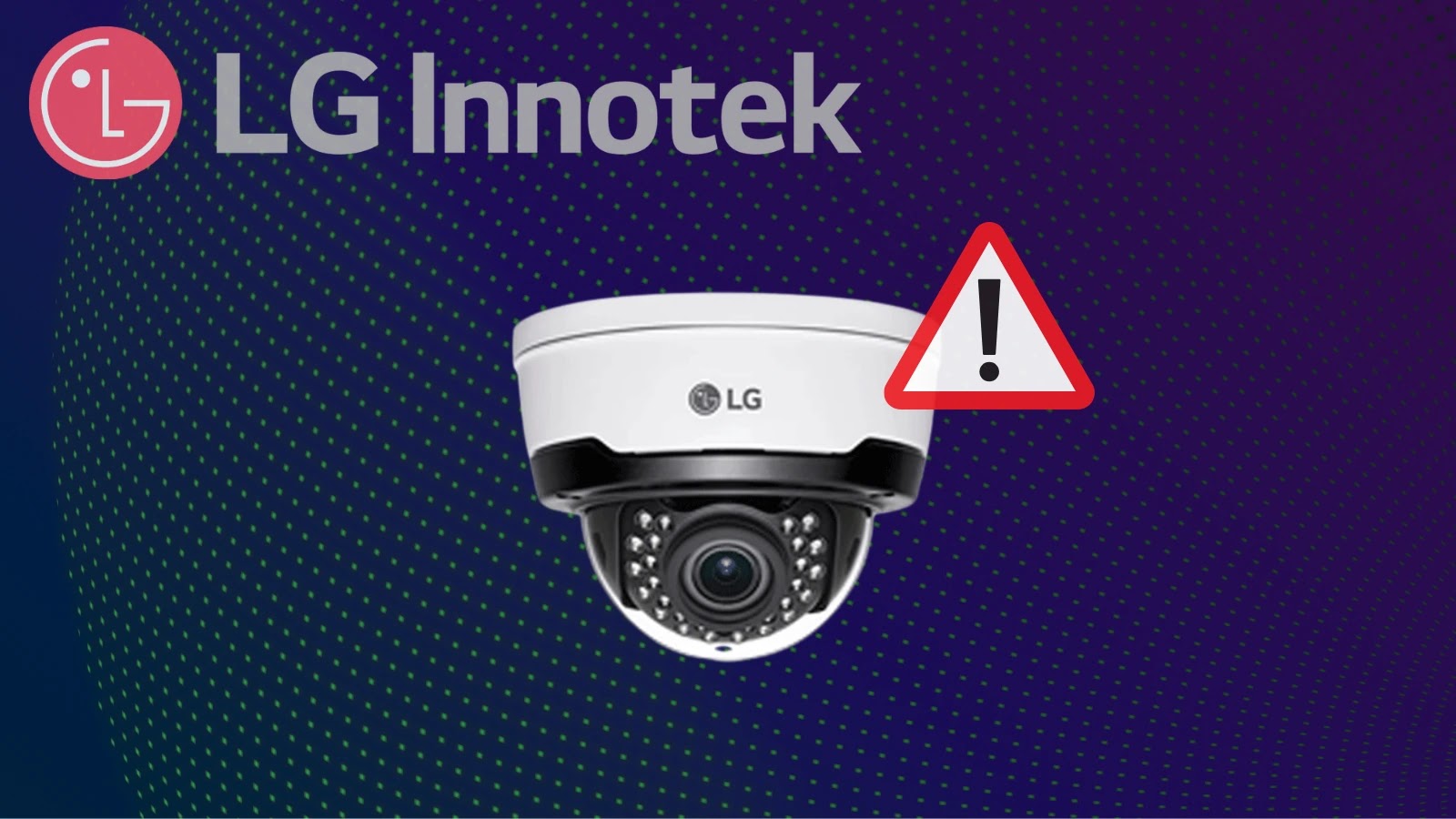
LG Innotek Camera Vulnerabilities Let Attackers Gain Administrative Access
LG Innotek Camera Vulnerabilities: A Critical Warning for Network Security
The landscape of network security is constantly shifting, with new threats emerging that target seemingly innocuous devices. A recent and significant discovery highlights the persistent risk posed by embedded systems: a serious security vulnerability identified in LG Innotek’s LNV5110R camera model. This flaw, if exploited, could grant attackers complete administrative control over affected devices, posing a severe risk to organizational and personal networks globally.
On July 24, 2025, the U.S. Cybersecurity and Infrastructure Security Agency (CISA) issued an urgent advisory regarding this remotely exploitable vulnerability. The advisory specifically warned that all versions of the LG Innotek LNV5110R camera model are susceptible, emphasizing the widespread nature of this threat.
Understanding the Vulnerability: Administrative Access at Risk
At the core of this issue is a critical weakness that allows cybercriminals to bypass security controls and achieve administrative privileges on affected LG Innotek LNV5110R cameras. This type of vulnerability is particularly dangerous because administrative access grants an attacker full control over the device. With such control, malicious actors could:
- Access live video feeds, compromising privacy and surveillance capabilities.
- Manipulate camera settings, potentially disabling recording or altering footage.
- Install malicious firmware or software, turning the camera into a botnet participant or a pivot point for further attacks within the network.
- Exfiltrate sensitive data if the camera is connected to internal systems or storage.
- Create backdoors for persistent access, even after initial detection attempts.
The specifics of the vulnerability, including its CVE identifier, are crucial for a clear understanding and targeted remediation. The flaw has been assigned CVE-2025-XXXX (Note: Placeholder as the exact CVE was not provided in the source. Analysts should consult CISA’s official advisory for the precise CVE number). This designation helps the security community track and categorize the vulnerability, enabling a standardized response.
Remediation Actions: Securing Your LG Innotek Cameras
Given the severity and widespread nature of this vulnerability, immediate action is paramount for users of LG Innotek LNV5110R cameras. IT professionals and network administrators should prioritize the following remediation steps:
- Isolate Affected Devices: Temporarily remove vulnerable cameras from public internet access or place them on a segmented network to limit potential exposure.
- Check for Firmware Updates: LG Innotek is expected to release patches or updated firmware to address this vulnerability. Regularly check the official LG Innotek support website for the latest firmware versions for the LNV5110R model. Apply updates immediately upon availability.
- Strengthen Network Segmentation: Implement or reinforce network segmentation to isolate IoT devices, including cameras, from critical internal networks. This limits an attacker’s lateral movement even if a camera is compromised.
- Implement Strong Passwords: Ensure all camera accounts use strong, unique passwords. Avoid default credentials.
- Disable Unnecessary Services: Close any unused ports or disable unneeded network services on the camera to reduce the attack surface.
- Monitor Network Traffic: Implement robust network monitoring to detect unusual activity originating from or targeting camera devices. Look for spikes in outbound traffic, unexpected connections, or unusual access patterns.
- Regular Vulnerability Scanning: Conduct regular vulnerability assessments and penetration testing on all network-connected devices, including IP cameras, to identify and address weaknesses proactively.
Tools for Detection and Mitigation
Leveraging appropriate tools can significantly aid in identifying and mitigating the risks associated with this and similar vulnerabilities:
| Tool Name | Purpose | Link |
|---|---|---|
| Nmap | Network discovery and port scanning to identify active camera devices and open ports. | https://nmap.org/ |
| OpenVAS / Greenbone Vulnerability Management (GVM) | Comprehensive vulnerability scanning for network devices, including IoT cameras, to identify known vulnerabilities. | https://www.greenbone.net/ |
| Wireshark | Network protocol analyzer for deep inspection of traffic to/from camera devices, useful for anomaly detection. | https://www.wireshark.org/ |
| Intrusion Detection/Prevention Systems (IDS/IPS) | Real-time monitoring and blocking of malicious network traffic targeting or originating from camera devices. | (Varies by vendor, e.g., Snort, Suricata) |
| Firmware Analysis Tools (e.g., Binwalk, Ghidra) | For advanced users to analyze camera firmware for embedded vulnerabilities or malicious implants. | https://github.com/devttys0/binwalk / https://ghidra-sre.org/ |
Conclusion: Proactive Security is Paramount
The discovery of critical vulnerabilities in devices like the LG Innotek LNV5110R camera serves as a stark reminder of the importance of continuous vigilance in cybersecurity. Administrative access flaws are among the most severe, as they grant attackers carte blanche over the compromised system. Organizations and individuals using these cameras must act decisively to apply patches, enforce robust network security practices, and monitor for suspicious activity. Prioritizing proactive security measures is the most effective defense against evolving cyber threats targeting our connected infrastructure.





